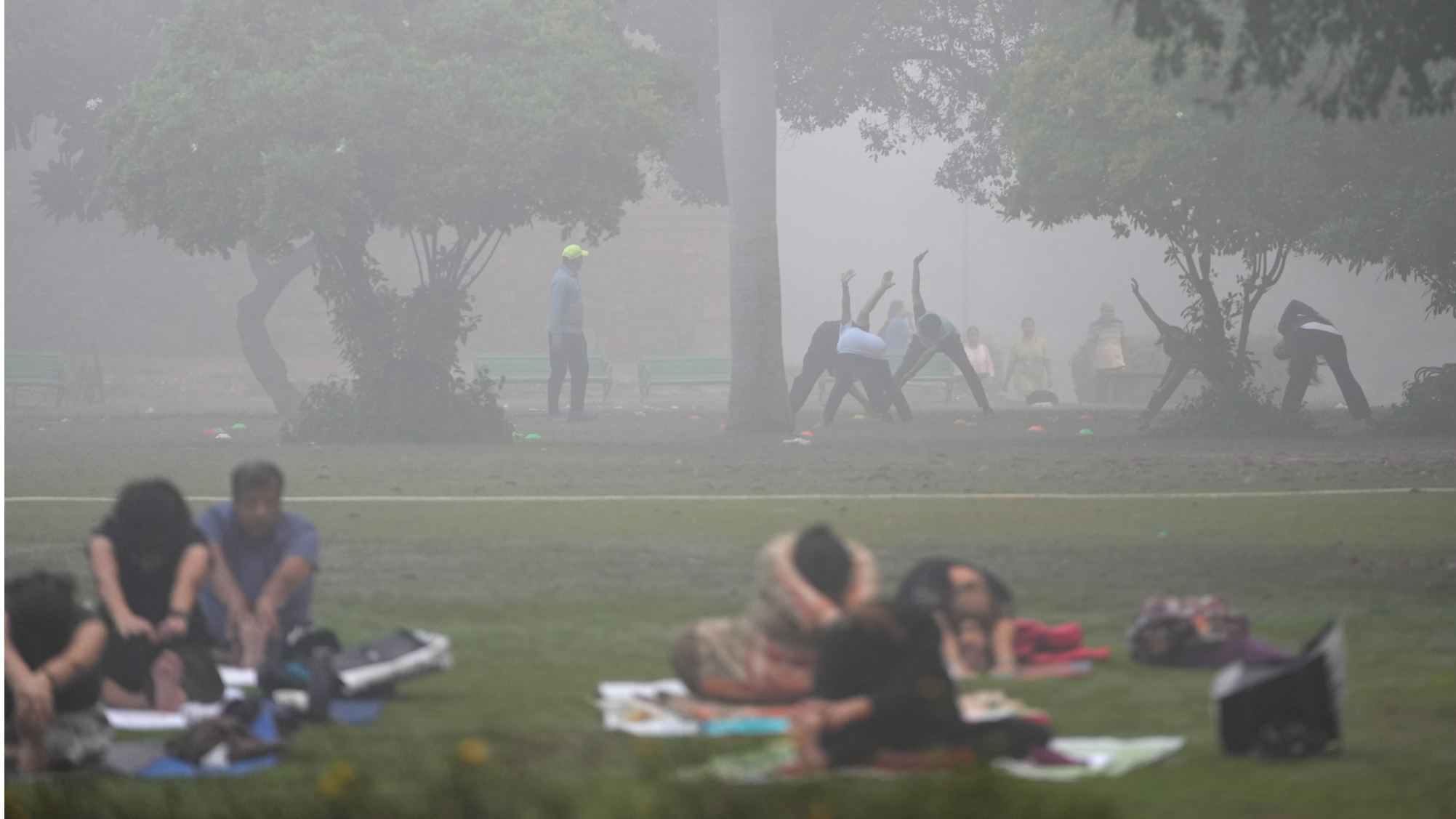
India’s national capital New Delhi has ordered all primary schools to switch to online learning mode from Nov 15 and banned all non-essential construction activities, among other measures, as a thick layer of smog has engulfed the city since the past few days and fueled public health concerns.
“Due to rising pollution levels, all primary schools in Delhi will be shifting to online classes, until further directions,” New Delhi Chief Minister Atishi Marlena, who now uses just her first name, announced on social media platform X late on Nov 14.
Despite the several measures that have been put in place, the local government is finding it difficult to contain the worst haze and smog of this season, which is a catastrophe for India's capital and has become an annual blight.
READ MORE: Visibility drops in parts of Delhi as pollution surges
On Nov 14, Delhi woke up to smog-filled skies with residents grappling with an Air Quality Index, or AQI, classified as 'severe'. The city's average AQI reached 430, marking a second day of hazardous pollution levels.
AQI readings across numerous parts of Delhi earlier surpassed 400 on Nov 13, signaling critical pollution levels. The highest recordings included the neighborhoods of Anand Vihar at 473, Ashok Vihar at 474, Dwarka Sector 8 at 458, and Jahangirpuri at 471, according to data from India’s Central Pollution Control Board, or CPCB.
A reading of more than 150 on the AQI index, which measures the concentrations of five major air pollutants that are detrimental to human health at any given moment, is considered unhealthy. When the AQI rises to 301 or above, it is considered an emergency, and harmful to all people.
The AQI for PM2.5 around Delhi's Vasant Vihar Block C area was over 1,300 at around 11 am on Nov 14, as per Swiss air quality technology company IQAir. The AQI for Dwarka-Sector 8 area was also in the hazardous category, at 1051, around the same time, according to IQAir figures.
In the National Capital Region, which covers surrounding areas and cities adjacent to New Delhi, the AQI levels were also high: Faridabad at 284, Gurugram at 309, Ghaziabad at 375, Greater Noida at 320, and Noida at 367.
The CPCB defines AQI levels as: 0-50 'good', 51-100 'satisfactory', 101-200 'moderate', 201-300 'poor', 301-400 'very poor,' 401-450 'severe', and above 450 'severe plus'. AQI in several places of the national capital reached 'severe plus' category on Nov 14.
Doctors have cautioned people to stay indoors as much as possible. The consequences of extreme air pollution extend beyond physical health and impact mental health, affecting mood and emotional resilience, medical experts said.
Ujwal Parikh, a pulmonologist at Sir Ganga Ram Hospital in New Delhi, said the number of patients with breathing difficulties and with serious pain in their chest has tripled over the past one week.
Residents in Delhi have reported eye irritations and breathing issues, doctors said.
"At least 15 to 20 patients are being admitted into hospital every day. The patients are complaining of wheezing, breathing difficulties, serious pain in their chest and metallic taste in their mouth due to air pollution, said Mahesh Sharma, a doctor and the owner of a private hospital in Noida, the National Capital Region, who is also a member of parliament.
Ashish Chaturvedi, a resident of south Delhi complained that the haze was hurting his eyes and making it hard for him to breathe.
Residents have been advised by the Delhi government to limit their outdoor activities. And on Nov 14, authorities announced enhanced anti-pollution measures, banning all non-essential construction and demolition work and restricting the entry of buses and trucks to the city.
More than 300 flights were delayed at the Delhi Airport on Nov 14 as a dense layer of smog engulfed the national capital, bringing down the visibility. Delhi's Indira Gandhi International Airport issued an advisory to air travelers, saying "low visibility procedures" had been enacted at the busy airport.
The deteriorating air pollution has triggered political blame games between the Delhi local government and India's federal government that is run by Prime Minister Narendra Modi. New Delhi is governed by the Aam Aadmi Party, a competitor of Modi's Bharatiya Janata Party (BJP).
Slamming the Delhi government for its failure to fight the alarming level of air pollution, Ramvir Singh Bidhuri, a member of parliament from South Delhi parliamentary constituency who belongs to the BJP, alleged that Delhi government has not taken any steps to contain air pollution.
Environment minister in the Delhi government, Gopal Rai, said on Nov 14 that the local government has taken all necessary measures to contain the deteriorating level of air pollution.
READ MORE: Toxic smog wreathes India's capital as winter nears
"If we want to reduce the pollution in Delhi, Uttar Pradesh, Haryana, Rajasthan and the federal government must work together," Rai said, referring to the neighboring states.
Smoke from stubble burning from neighboring states like Punjab and Haryana travels to New Delhi, leading to a surge in pollution in the city of more than 20 million people.
Indiscriminate use of fire crackers, during the recent festival of Diwali, deteriorated the air quality further, said Sharma, the doctor and parliament member, who belongs to the BJP.
The writer is a freelance journalist for China Daily.



